Forget the MacBook Air – I tried an Asus Zenbook and here's how it betters Apple
Lighter and brighter: the Asus Zenbook S 13 OLED sometimes beats Apple's iconic MacBook Air at its own game
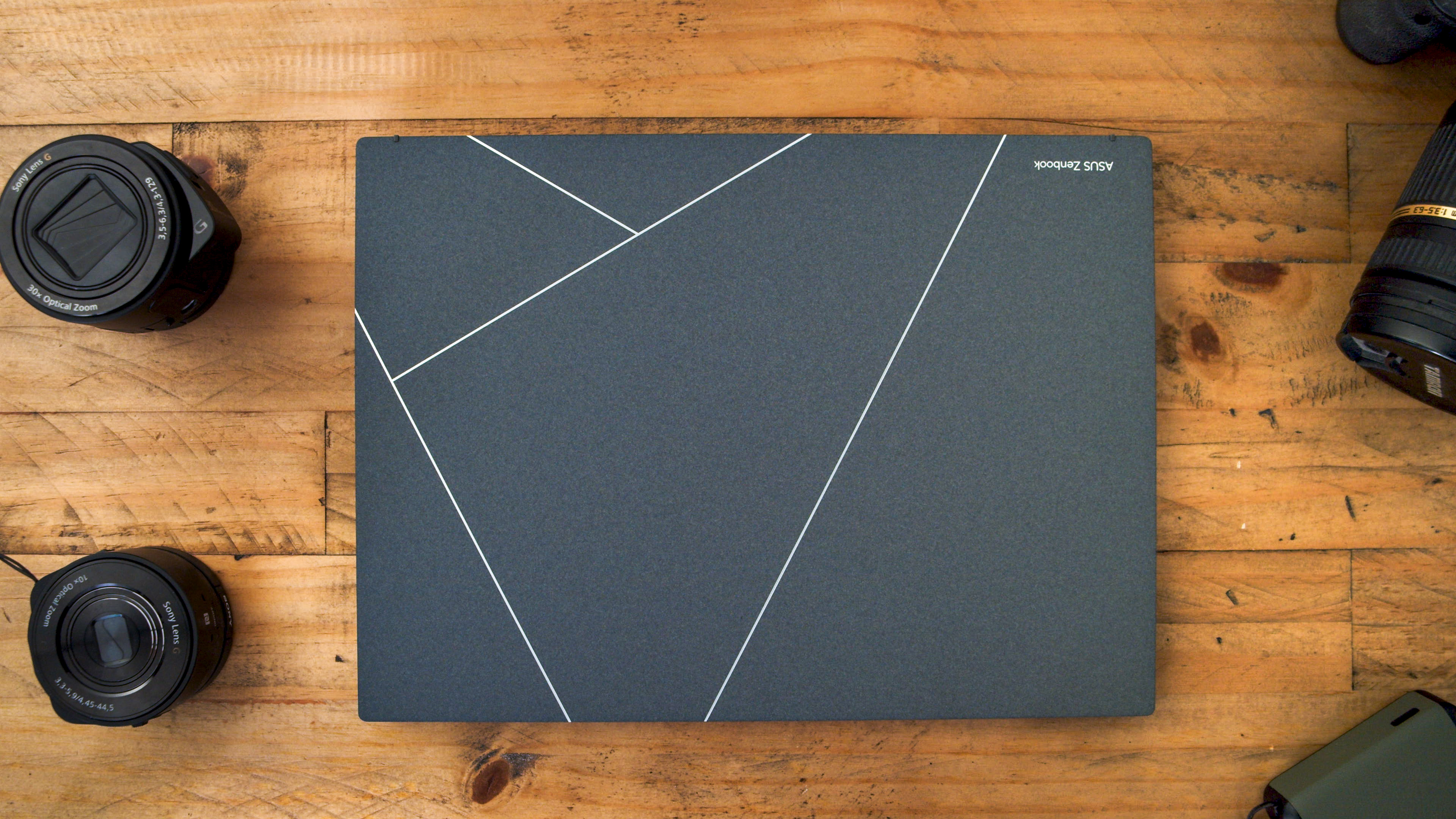

I’ve wanted to pick up a MacBook Air for years, and I was getting close to taking the plunge... until the Asus Zenbook S 13 OLED landed on my desk.
Like a lot of professionals, my laptop needs are mixed. I fall under the catch-all category ‘content creator’, so edit massive 4K 60fps YouTube videos, process loads of pictures, and write a lot of words.
I also travel for work, so finding the balance of powerful, power-efficient, and portable felt impossible... until the original M1 Macbook Air dropped back in 2020, as one of the best laptops for most people.
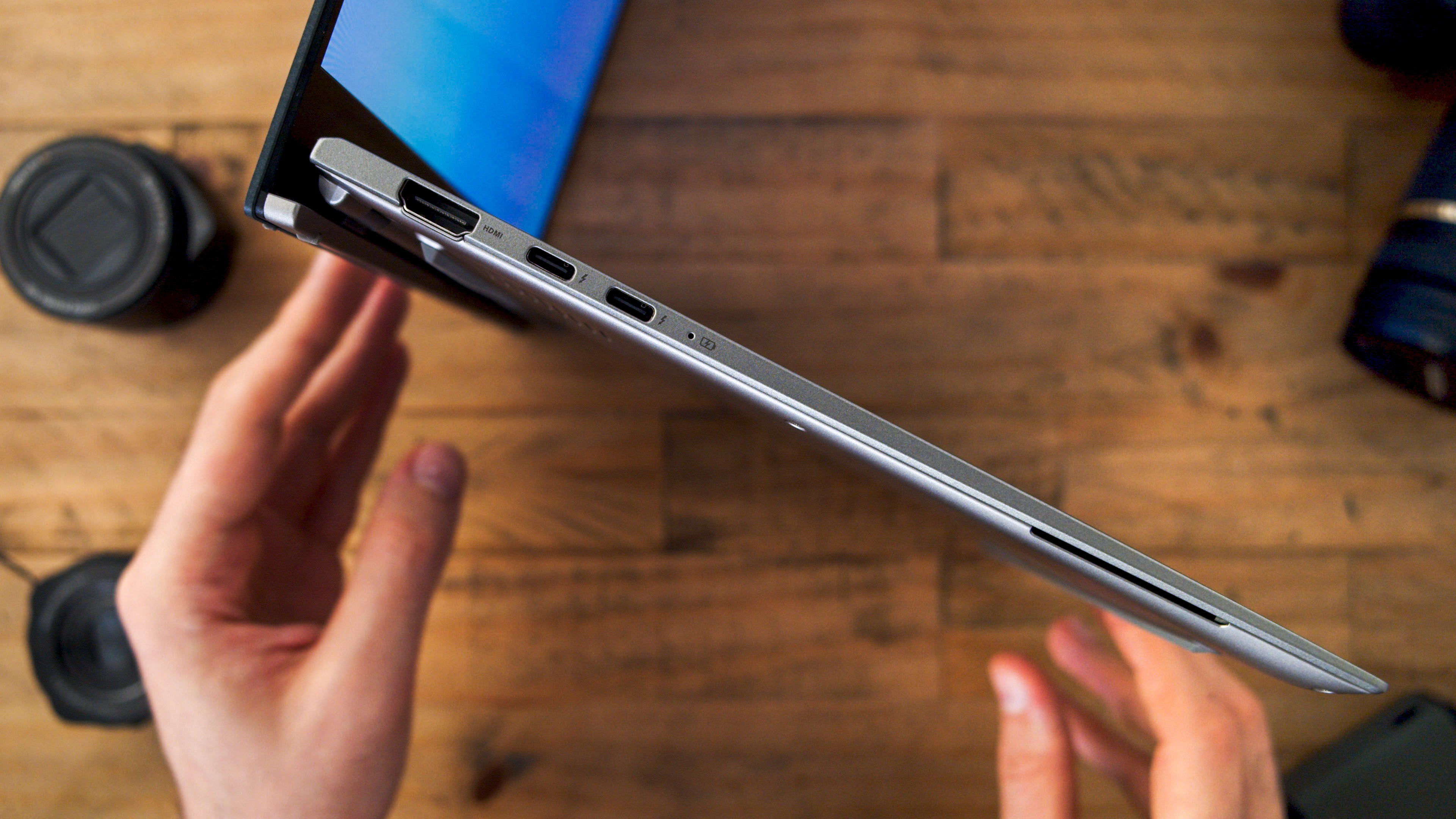
I didn’t buy the Macbook Air, though, I instead went with the sensible creator's choice – the 16-inch MacBook Pro – with all that power. But if I’d known that the Air would also be powerful, great at editing video, and had a battery that lasted a full working day while also saving me money and backache versus my hefty Pro, I might have done things differently.
Since the Asus Zenbook S 13 OLED landed on my desk, though, with its stunning 2K display, full-sized ports, massive trackpad, and that excellent keyboard, two years of Macbook Air envy seems to have vanished... Here's how Apple's and Asus' laptops compare in key areas.
1. STYLE AND SUBSTANCE
The first thing about the Zenbook S 13 OLED that sings when you open the box is just how much it doesn’t look like a Macbook or a boring Windows laptop.
Its lid looks striking with its plasma ceramic finish that’s somewhere between parchment and fine granite to look at, but is cool, solid and smooth to the touch.
Get all the latest news, reviews, deals and buying guides on gorgeous tech, home and active products from the T3 experts
The lid also fends off fingerprints well, while the Zenbook’s entire weight belies the all-metal body that delivers a reassuring rigidity.

My main hangup with my current 16-inch MacBook Pro is its heft. I can’t open it when I’m on a plane (yay economy class) – so my next laptop needs to be smaller so I can 'work on the fly' more easily. The Zenbook S 13 OLED's shallower dimensions and 13-inch screen make it a much more convenient travel buddy.
If you think an iPad might be a better option, though, practically speaking, the Zenbook is also more useful for productivity than the iPad Pro 12.9 with a Magic Keyboard. It has a smooth exterior versus Apple's grippy keyboard that wraps around the iPad, preventing the tablet from slipping in and out of bags or sleeves. Like me, you might also struggle to work across all the apps you need on iPadOS. Most interestingly, while the iPad and Magic Keyboard weigh 1380g, the 1050g Zenbook S 13 OLED is significantly lighter. I also struggled with being limited to a single USB-C port on my iPad.
Speaking of ports, if you’ve been living that dongle life with your MacBook, you may find that it’s great 90 per cent of the time, but every now and then that you could really do with a full-sized USB-A or HDMI port. Miraculously, despite its svelte profile, the Zenbook S 13 OLED obliges, with one of each. It’s also loaded with two Thunderbolt ports, which is perfect for massive file transfers, and there's a Full HD webcam, as well as an IR camera for Windows Hello login.
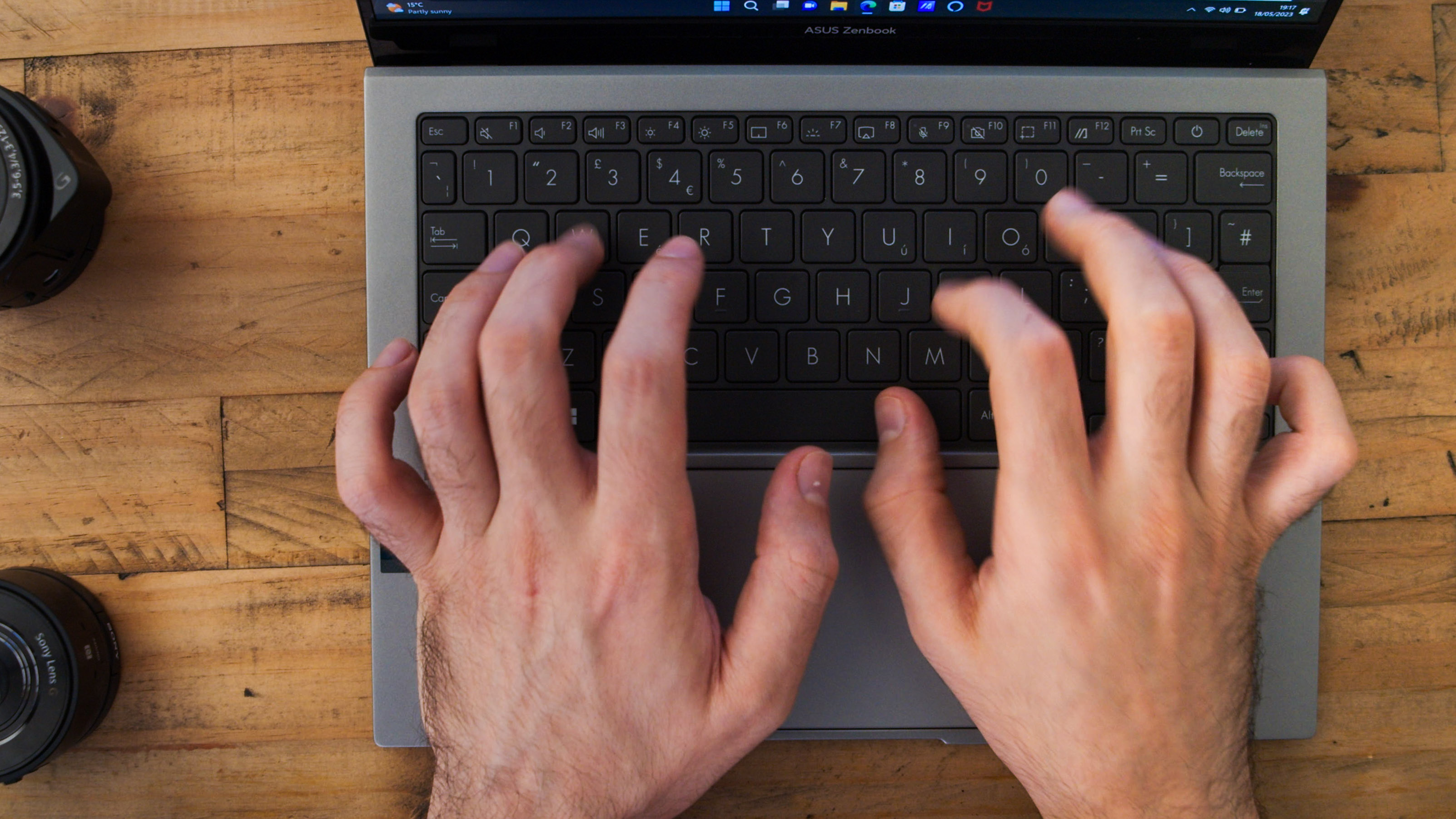
Asus generally makes brilliant keyboards, and while the Zenbook S 13 OLED doesn't pack as much travel as some competition, its excellent click feedback makes sure it's great for instant touch typing, even if, like me, you've got massive hands.
There are a couple of other design highlights that won me over when compared to the Macbook Air. Firstly, the screen unfolds totally flat and holds its position. While using the S 13 OLED to watch Netflix, I found myself resting it more comfortably when lying down, propping it up against a wall or my lap.
So while this isn't the more hybrid-styled flip version of Asus's OLED line, it's more versatile than a MacBook for watching on and replaced my tablet on a couple of occasions.
2. OLED > IPS
The Asus Zenbook S13 OLED's real flex is its screen though. While you can get some fantastic IPS screens, many of them on Apple's laptops and tablets, the general consensus is that OLEDs are better, specifically for watching high dynamic range (HDR) content. They pack deeper, inkier blacks, higher contrast ratios and punchier colours.
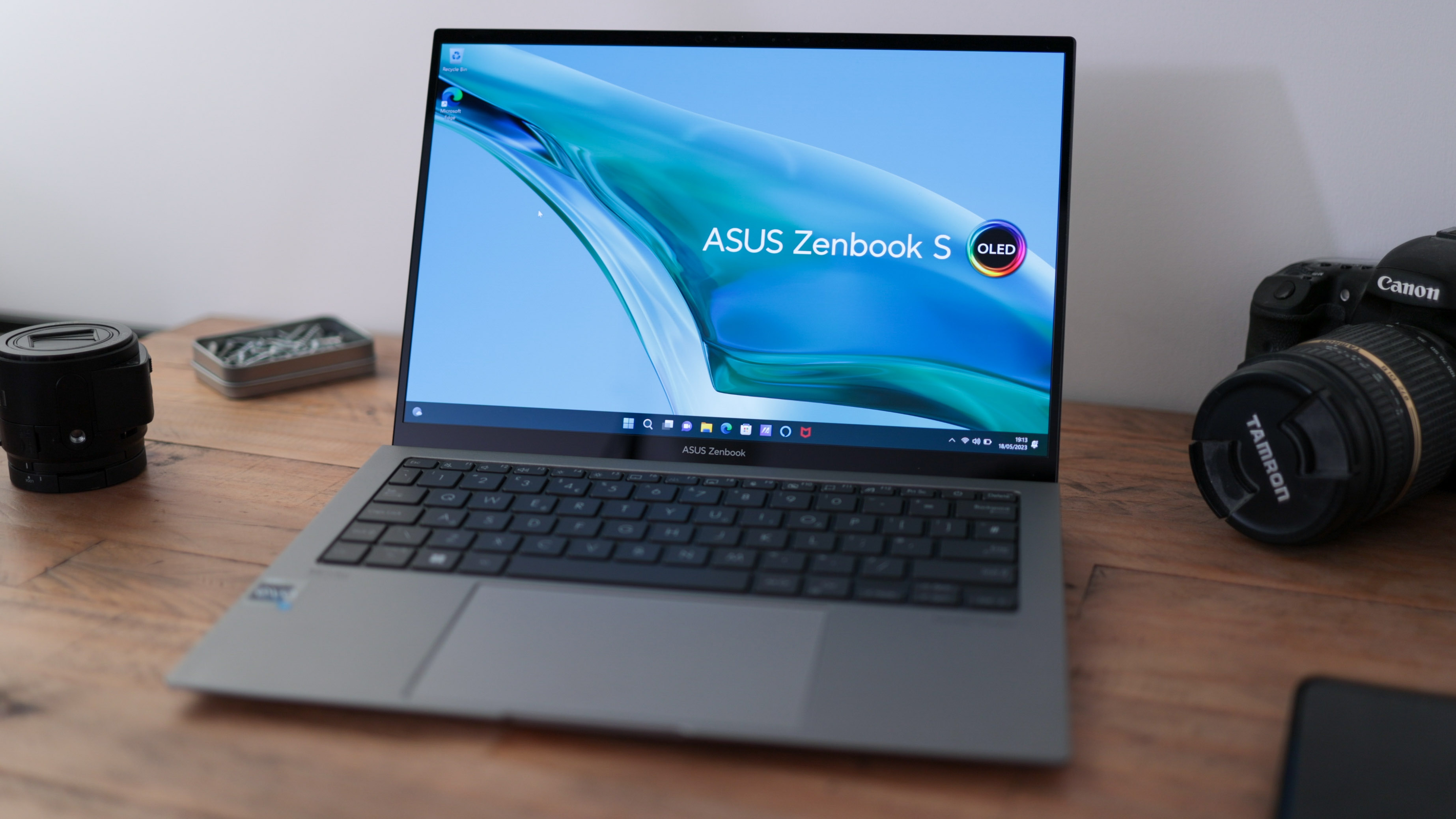
As its name suggests, the Zenbook S 13 OLED's screen packs this tech, and it also sports a high max brightness at over 500 nits. The MacBook Air, meanwhile, caps out at around 400 nits. In addition to looking more vibrant, therefore, Asus's ultrabook should also be a bit easier to see outdoors, and if you turn on HDR, optimised high dynamic range content is crammed with tonal depth and looks immense.
Its 2.8K resolution is also nice and sharp, edging slightly ahead of the Macbook Air, though both should look crisp to the eye. And with the same 16:10 aspect ratio and matching 13.3-inch screen sizes, practically speaking, they offer a similar experience – a great balance between working and watching on.
3. AIR TIME
Even with all these Zenbook highlights, there are some areas the Macbook Air wins out over Asus's sleekster. For starters, if you're coming from a MacBook like me, nothing can touch Apple's trackpads. Between the ways MacOS is optimised for multi-touch, through to the tactility, that's one area the Zenbook falls behind, even though it has a seriously spacious trackpad for the laptop's size.
The Macbook Air is also fanless, so is as quiet as a mouse. The Zenbook S 13 OLED, meanwhile, sounds like it could take off at any moment. Two fans on its undercarriage whir with gusto when the laptop's handling a heavy load, and it can be distracting.
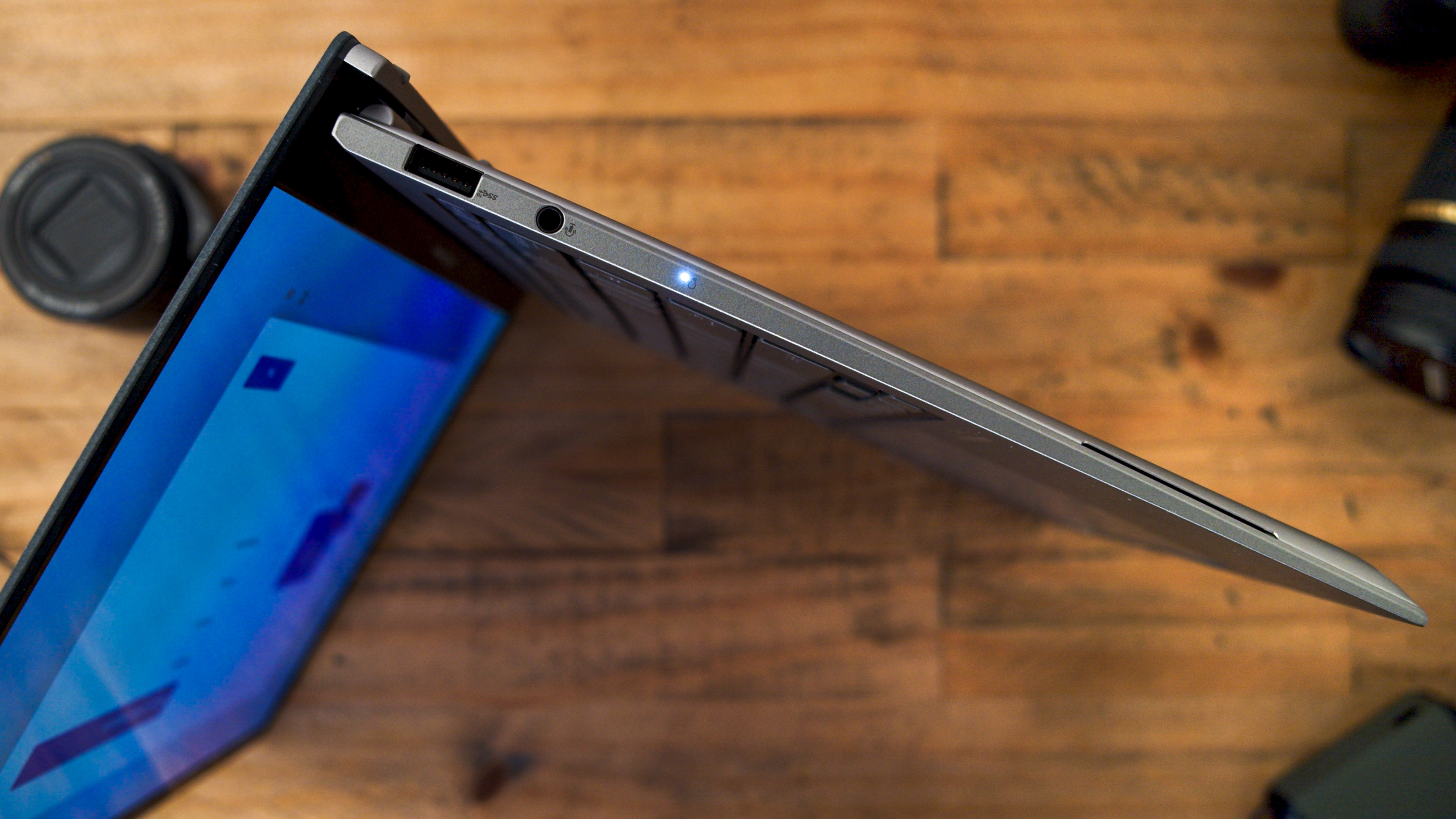
When you open the Zenbook S 13 OLED, the lid creates a lip that raises the keyboard when on a surface. This makes typing a little more comfortable, angling the keys to face you a bit more, while also creating space for airflow to keep things cool.
If you plan on typing with the Zenbook on your lap more than a desk, this design might not be as comfortable as a traditional, lipless alternative like the MacBook line. After all, the weight of your hands and the laptop is concentrated to a single strip that presses against your leg.
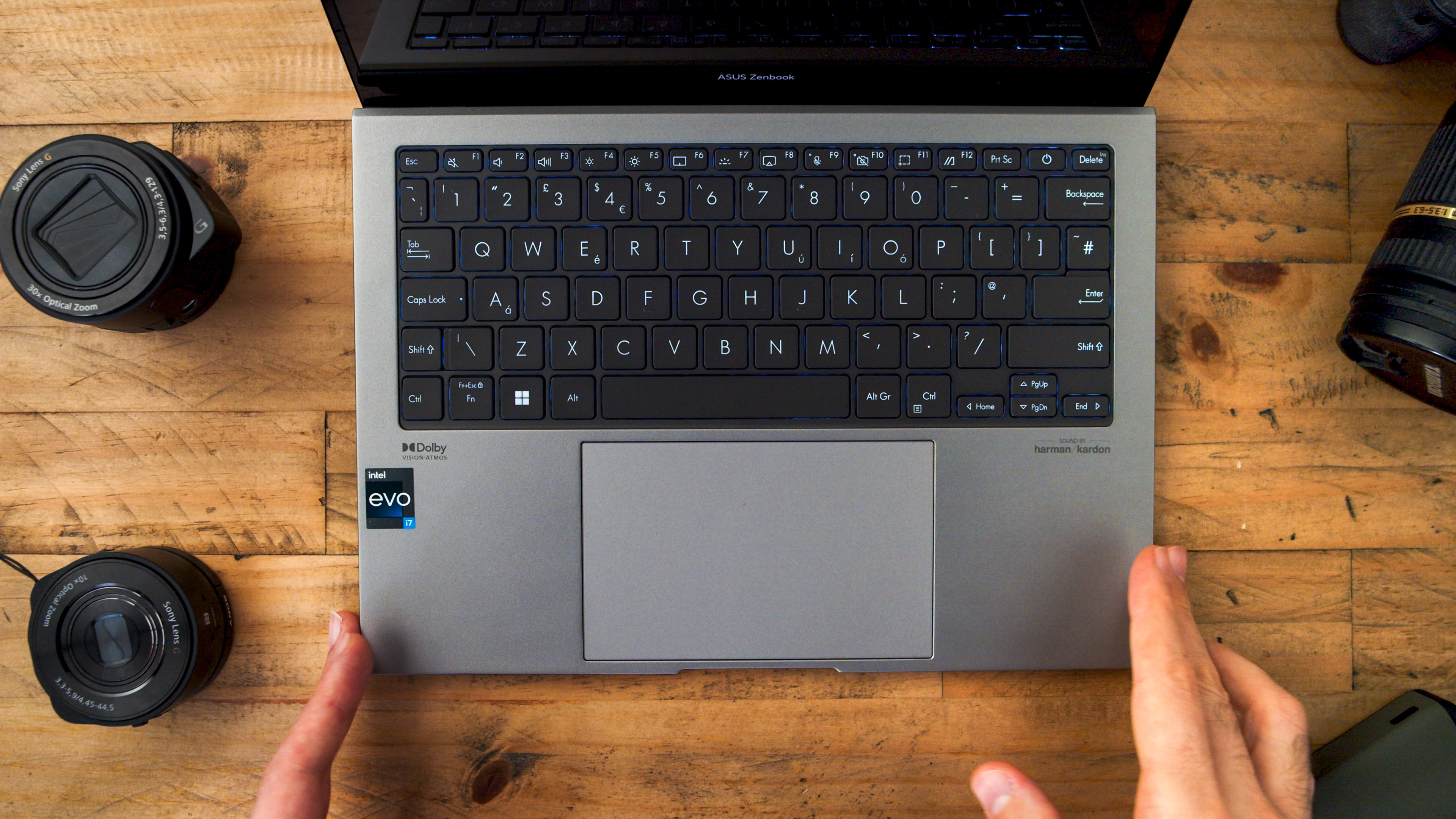
Finally, the MacBook is just that bit faster at editing 4K video. Don't get us wrong, we were impressed that the Zenbook S 13 OLED (Intel i7-1355U, 16GB RAM) took 20 minutes to render almost 10 minutes of 4K video (60fps) with a busy timeline in Adobe Premiere Pro. The latest Macbook Air, however, did the job about 25 per cent faster.
When you look at the price of both laptops, the M2 Macbook Air starts at £1,249, versus the £1,500 Zenbook S 13 OLED. Spec up the Macbook Air to match the Zenbook's storage and RAM config, and you're talking similar numbers.
So while both are pricey laptops that are poised to punch it out, each super-slim zingers in their respective MacOS and Windows camps, Apple's Macbook Air edges ahead for creator tasks that require grunt, and will be the obvious choice for Apple fans in general.
The Zenbook S 13 Ultra, meanwhile, is a loaded weapon that wins big with that stunning OLED screen, packs a fantastic set of ports for the size and more standout styling.

Basil has been writing about tech for over 12 years, with bylines in TechRadar, Metro, Wired, and Digital Camera World – to name but a few titles. He expertly covers everything from mobile phones to smart devices, cameras, audio-visual hardware, and kitchen tech. In addition to his extensive journalism experience, Basil is also skilled in video production, content strategy, and vegan baking, and runs Tech[edit], a technology-focused YouTube channel.